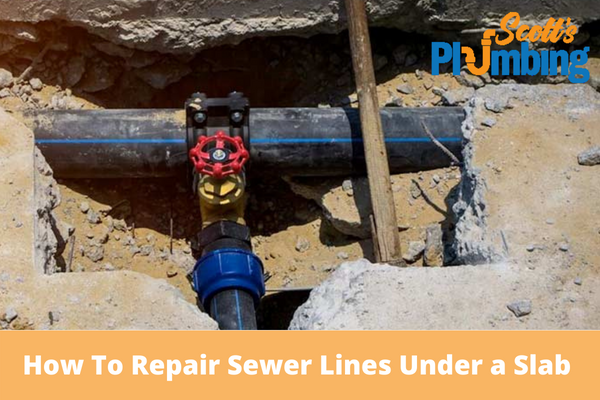When you own a house or company, hearing the words “broken sewage line” is one of the most stressful things. When coupled with the phrase “beneath the concrete,” the expression takes on an even more unpleasant tone. Hearing these statements should, God willing, signify that the break is barely below the pavement out front. However, in some cases, this indicates that the crack is located underneath the property, which is constructed on a slab foundation. Neither basements nor crawlspaces may be found in structures that have slab foundations. When a drain pipe breaks below the slab, it might be challenging to locate and correct the problem.
Here we describe the typical procedure for repairing sewer lines under a concrete slab.
Locating Leaky Pipe Under Cement
Because cement is porous, it will soak up any water that seeps through and then waft it to the surface. Through this, you will be able to witness the leak with your own two eyes, as water will be seen seeping through the floorboards of your home. You are likely to have at least one of the following items in your house:
- Wet carpets
- The appearance of mildew and mold
- Pools of water
The water may be visible directly above the leak. Still, suppose the leak has been going on for extended periods. In that case, the water will have spread out, making it more difficult to pinpoint exactly where the leak is. Listening devices placed above ground may assist experts in determining the leak’s location.
Floor And Slab Excavation For Pipe Replacement
Leak detection before excavation. This entails excavating inside your home (or under if the leak is just within the perimeter), repairing or replacing the damaged pipe, replenishing the foundation, mending concrete, and restoring your flooring. Jackhammering causes dust that settles throughout the house. This procedure is risky.
Apart from annoyance, hefty labor expenses, and upkeep, chiseling through your floorboards raises concerns about the house’s structural stability. Suppose the broken pipe needs many access sites or a vast entry point. In that case, your home’s foundation might be severely damaged, even after new concrete is placed.
Relining Pipes
Relining the pipes using Cured In Place Pipe, also known as CIPP, is one of the repair options that may be considered if the sewage pipe has substantial degradation. Compared to breaking up and restoring vast volumes of concrete, this method is less intrusive. The first step in the process of relining involves placing a camera into the sewage pipe so that the breakage and overall integrity of the line can be inspected. Second, a sewer-cleaning cable device or high-pressure water is used to clean the inside of the sewage pipe using either a mechanical method or a combination of the two. The last step involves pulling a thin epoxy-impregnated felt liner through the line using a cable, then inflating it like a balloon and allowing it to dry so that it can close the pipe. The epoxy fills up any tiny holes and reinforces the pipe walls that have become worn.
Scott’s Plumbing likes to tunnel from the outside whenever possible since this method is more cost-efficient for repairing leaks. On the other hand, before we even begin excavating your property, we can provide you with several different repair choices if you want.



